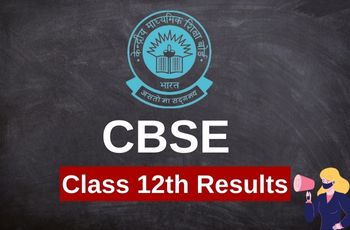Chapter 15: Our Environment- Exercises
Science
(www.olympiadsuccess.com)
Chapter 15: Our Environment
Class: X
Exercises
Question 1:
Which of the following groups contain only biodegradable items?
- Grass, flowers and leather
- Grass, wood and plastic
- Fruit-peels, cake and lime-juice
- Cake, wood and grass
Answer 1:
3.Fruit-peels, cake and lime-juice
4.Cake, wood and grass
Question 2:
Which of the following constitute a food-chain?
- Grass, wheat and mango
- Grass, goat and human
- Goat, cow and elephant
- Grass, fish and goat
Answer 2:
2.Grass, goat and human
Question 3:
Which of the following are environment-friendly practices?
- Carrying cloth-bags to put purchases in while shopping
- Switching off unnecessary lights and fans
- Walking to school instead of getting your mother to drop you on her scooter
- All of the above
Answer 3:
- All of the above
Question 4:
What will happen if we kill all the organisms in one trophic level?
Answer 4:
The transfer of food energy to the next trophic level will stop, if we kill all the organisms in one trophic level. This will result in the breaking of the food chain causing the ecosystem imbalance. This will further result in the death of the organisms of the higher trophic level, whereas the individuals of the lower trophic level will show enormous growth in their population. Both the conditions will result in ecological imbalance.
Question 5:
Will the impact of removing all the organisms in a trophic level be different for different trophic levels? Can the organisms of any trophic level be removed without causing any damage to the ecosystem?
Answer 5:
Its true that the impact of removing all organisms in a trophic level will be different for different trophic levels. Killing all the producers are will cause death or migration of the primary consumers in the ecosystem. The absence of producers will affect the subsequent level of consumers. But then again if primary consumers are removed, organisms of higher trophic level will die, while producers (lower level ) show rapid growth which will be much beyond the carrying capacity of the environment. So the removal of the organisms in a trophic level will upset the entire ecosystem as all categories of organisms are linked through food chain. Therefore the survival of organisms of one trophic level is dependent on the existence of the members of other trophic level.
Question 6:
What is biological magnification? Will the levels of this magnification be different at different levels of the ecosystem?
Answer 6:
The process in which certain substances like pesticides and heavy metals (non-biodegradable) move up in the food chain in progressively greater concentration through the way in water bodies like rivers and oceans is called biological magnification. The level of these harmful substances will keep on increasing from one trophic level to the other. Certain harmful substances get concentrated many a times at each subsequent trophic level, after they enter the food chain at the level of primary producers.
Question 7:
What are the problems caused by the non-biodegradable wastes that we generate?
Answer 7:
Following are the problems: -
- Their volume keeps on increasing creating the problem of their safe disposal.
- Some of the non-biodegradable wastes like heavy metals and pesticides enter into the food chain and increases in the upper trophic levels.
- Non-biodegradable wastes reduce the soil fertility by changing the natural pH balance.
- Non-biodegradable wastes cannot be broken-down into simpler substances.
Question 8:
If all the waste we generate is biodegradable, will this have no impact on the environment?
Answer 8:
Decomposing of biodegradables wastes into simpler substances takes place because of microorganisms themselves hence providing raw materials for producers, but they do have adverse effects on the environment: -
1.The release of foul smell and harmful gases starts because of the slow decomposition of biodegradable waste. These when inhaled by human beings may cause irritation, nausea, giddiness, etc.
2.Decomposing waste offers breeding ground for some harmful organisms. Adequate number of harmful microorganisms can cause diseases in animals, plants and human beings.
3.The increase in the number of microorganisms in aquatic medium will- cause oxygen deficiency in waterbodies.
Question 9:
Why is damage to the ozone layer a cause for concern? What steps are being taken to limit this damage?
Answer 9:
The earth has a protective shield around it called Ozone layer. It prevents harmful ultraviolet radiation of the sun from reaching the earth. Chlorofluorocarbons (CFCs) one of the air pollutants, is causing depletion of ozone layer. This is exposing greater amount of UV radiation to reach the earth. UV radiation will upset the ecosystem because it will affect the process of photosynthesis in plants, destroying planktons and decomposers. In human beings, UV radiation may cause skin cancer, the cataract of eyes and also damage to the immune system. Quite a few developed, as well as developing nations of the world, have agreed to sign and obey the directions of TINEP (United Nations Environment Programme) to freeze the production of CFCs or to limit their production to some extent.











